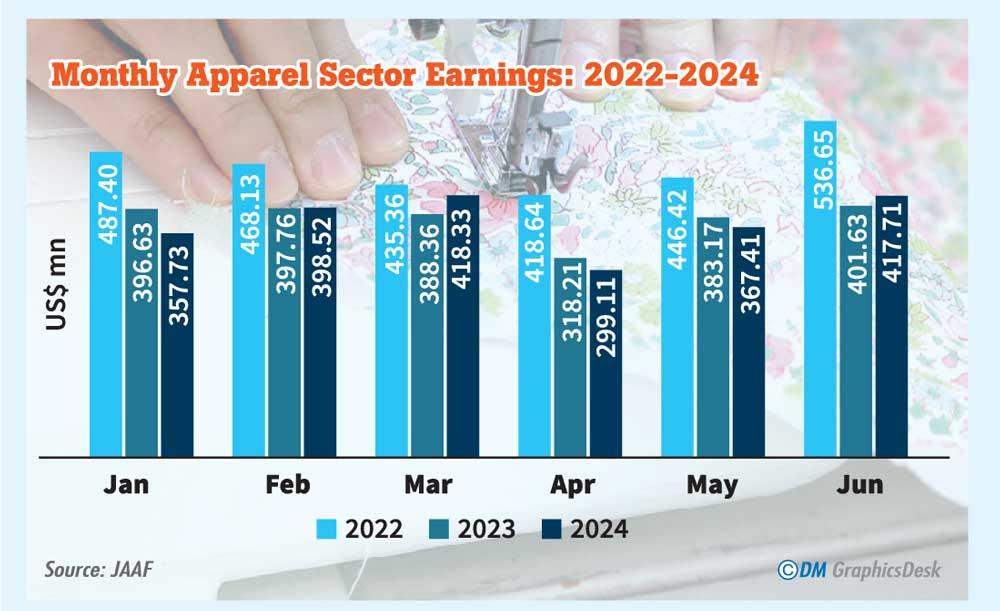29 Jul 2024 - {{hitsCtrl.values.hits}}

Earnings from the apparel sector in June expanded 4 percent Year-on-Year (YoY), a move towards the growth trajectory after witnessing a contraction for two consecutive months.
Data compiled by the Joint Apparel Association Forum (JAAF) showed that in June, export earnings increased to US$ 417 million from last year’s US$ 401 million. However, this is a contraction when compared with the US$ 536 million recorded in 2022, the year of the economic crisis.
As per the available statistics, the expansion is due to increased exports to the United States. In June, the US accounted for US$ 174 million of total exports, a 12.78 percent growth YoY.
However, exports to the Europe Union, and the United Kingdom contracted by 12.65 percent YoY, and 3.52 percent YoY, to US$ 116 million, and US$ 55.91 million.
Exports to other markets grew 27 percent YoY to US$ 71 million.
While the month of June shows an improvement in Sri Lanka’s apparel exports, cumulative analysis shows a dip. For the first six months of the year, the apparel sector fetched earnings of US$ 2.2 billion, which is a marginal dip of 1.18 percent YoY. When compared to the 1H22 earnings, the contraction is about 19 percent.
For the January to June period, exports to the US and EU dropped by 2.87 percent YoY and 4.42 percent YoY to US$ 857 million and US$ 659 million.
Exports to the UK and other markets grew by 7 percent YoY and 1.84 percent YoY.
Meanwhile, a recent analysis by Capital Alliance (CAL) noted that Sri Lanka’s textile and apparel stocks are on the mend.
The sector, which had been struggling due to challenging global economic conditions, weak consumer spending and excessive inventory by retailers, is now showing signs of improvement.
According to CAL, three key factors contribute to this positive shift.
First, US data for the first quarter of 2024 shows that apparel inventory levels are lower than they have been since 2022, which indicates the need for increased orders from retail stocks that has to be replenished, CAL said.
The second factor is an uptick in US retail sales for clothing, which has been mirrored by an increase in apparel imports. This improvement reflects the anticipated rise in demand.
The third factor is the significant drop in cotton prices, which have decreased by 27 percent since peaking in February 2024. CAL attributed this price reduction to the strong supply from countries such as Brazil and the US, noting that this key raw material’s cost reduction helps the sector improve margins.
CAL pointed out that lower cotton prices and better factory capacity utilisation are leading to reduced costs, improved margins, and increased production volumes.
“Based on these factors, we believe the outlook for apparel and textiles is promising,” CAL said.
26 Nov 2024 1 hours ago
26 Nov 2024 2 hours ago
26 Nov 2024 2 hours ago
26 Nov 2024 2 hours ago
26 Nov 2024 2 hours ago